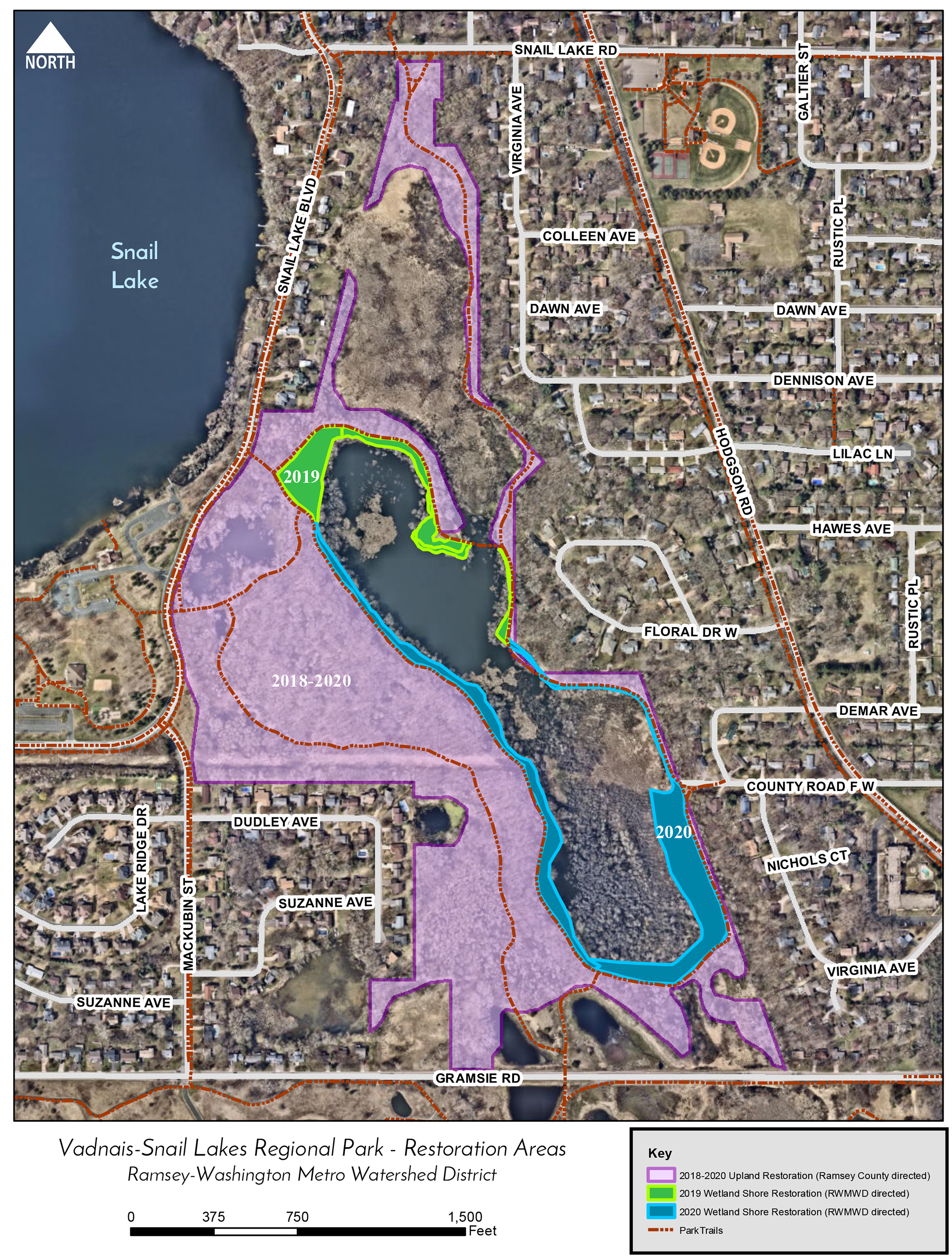
Habitat restoration underway at Vadnais-Snail Lakes Regional Park
Winter update
A major transformation is occurring this winter at the park as a contractor hired by Ramsey County clears invasive buckthorn and other brush. This will open up the forest canopy and make way for improved natural habitat as we spread native seed this winter (read more about this below) and prepare for spring planting along the wetland edge.
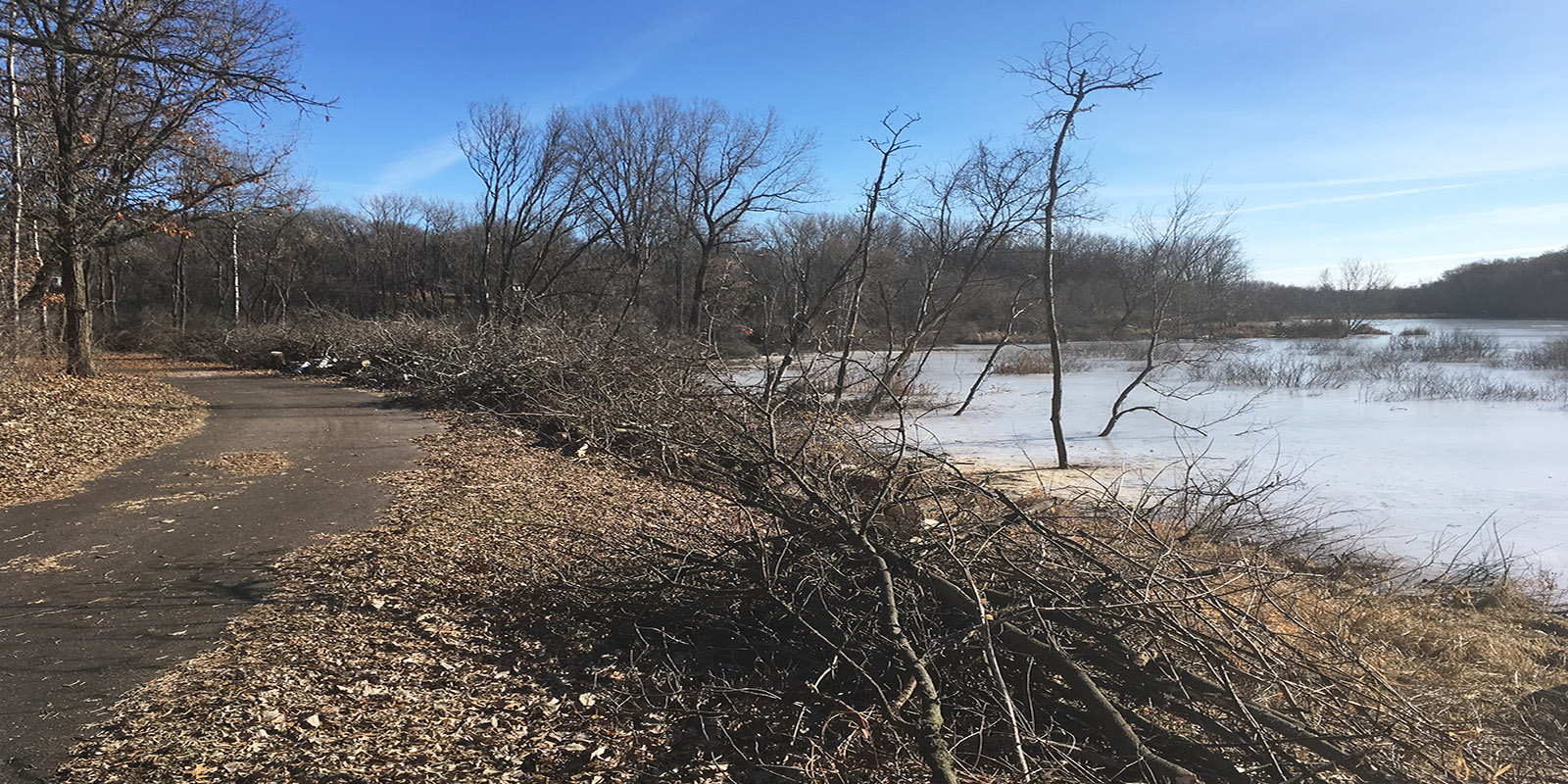
Meanwhile, we’re using a new remote-controlled mower, the Green Climber, to help knock down invasive narrow-leaved cattail. High water in the spring will then naturally drown out a substantial portion of the cattail. The mower is relatively lightweight, making it a good option for frozen wetlands. And since it is operated remotely, it keeps our natural resources staff a safe distance away from the mowing area. In the spring, we’ll plant native emergent vegetation like bulrush that provide improved habitat for a variety of wildlife.
In December, we spread native plant seed along select areas of the restoration area. Although it may seem strange to do this now, dormant or winter seeding works quite well. Many native plant species rely on freezing and thawing to prepare their seed for germination in the spring.
Our natural resources team gathered much of the seed from other established restoration sites in the watershed. This seeding will help to establish a diverse and attractive natural buffer along the wetland and park path.
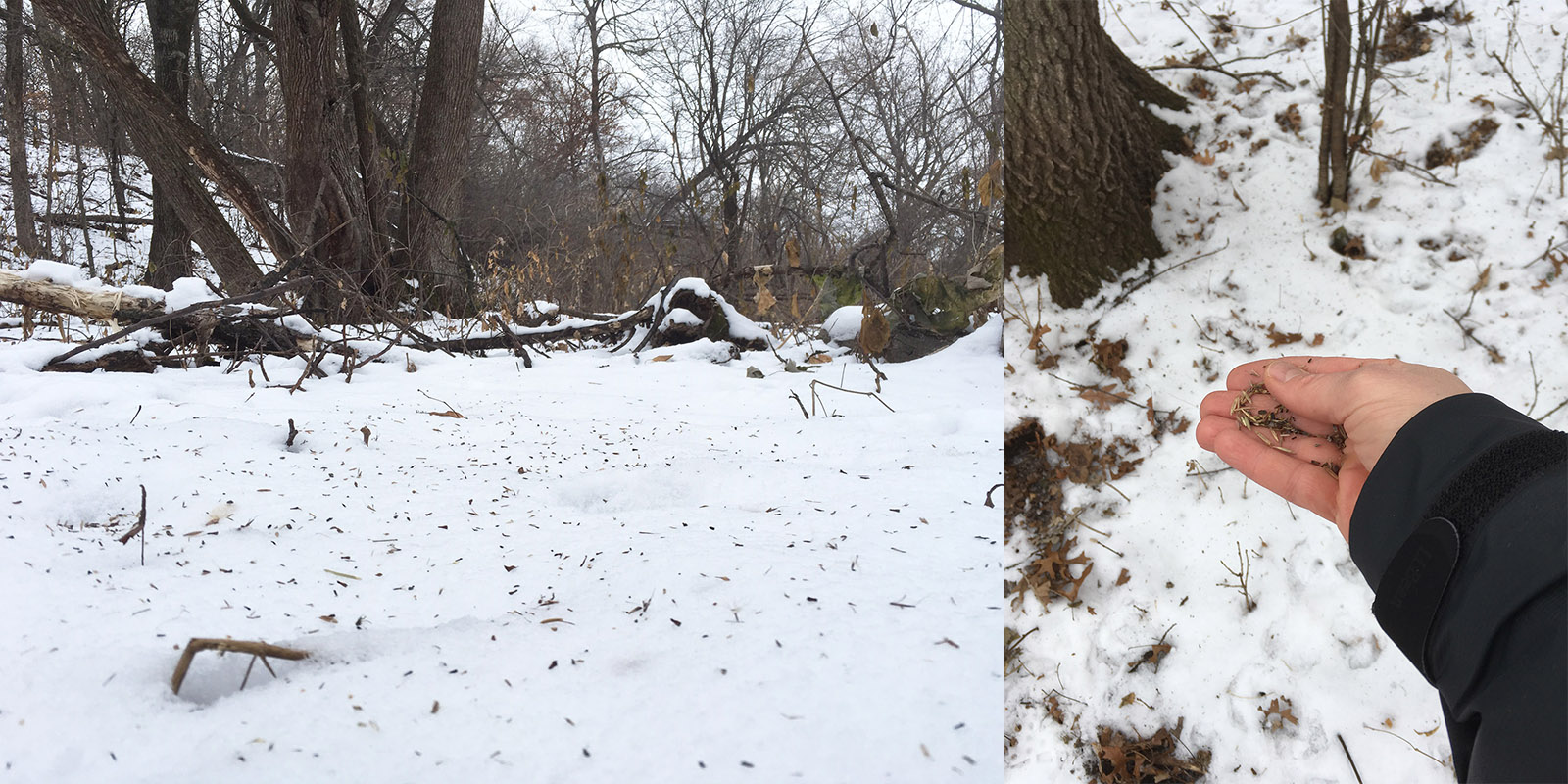
Background
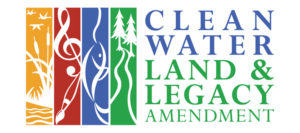 The Ramsey-Washington Metro Watershed District and Ramsey County have teamed up to restore about 60 acres of forest and 4,000 linear feet (4 acres) of wetland buffer habitat within Vadnais-Snail Lakes Regional Park. Located between Snail Lake and Grass Lake, the area supports one of the largest oak forest and associated wetland habitats in the region. However, over the last several years, it has been degraded by invasive vegetation, flooding and erosion.
The Ramsey-Washington Metro Watershed District and Ramsey County have teamed up to restore about 60 acres of forest and 4,000 linear feet (4 acres) of wetland buffer habitat within Vadnais-Snail Lakes Regional Park. Located between Snail Lake and Grass Lake, the area supports one of the largest oak forest and associated wetland habitats in the region. However, over the last several years, it has been degraded by invasive vegetation, flooding and erosion.
With funding from a DNR Conservation Partners Legacy Grant, this multi-year project is designed to create more healthy and resilient forest and wetland ecosystems.
Project goals
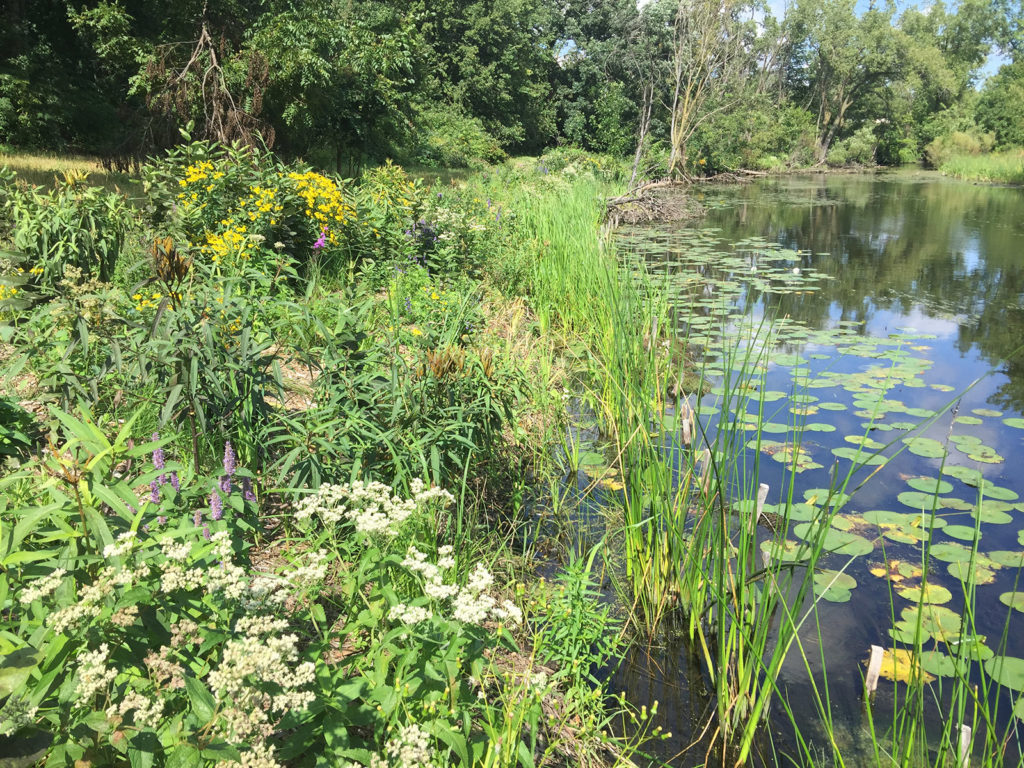
- Stabilize wetland shoreline and increase ground cover to reduce erosion.
- Significantly reduce the cover and spread of invasive plant species.
- Increase the number and types of native plants.
- Enhance scenery for park users.
Restoration process
To prepare the site, crews will first remove woody invasive vegetation – mainly buckthorn, honeysuckle and locust. In addition, invasive weeds such as reed canary grass, garlic mustard and Canada thistle will be controlled.
Next, prescribed burning of select areas will make way for native seeding and planting. School groups and other volunteers will assist with the planting of Minnesota native vegetation, and District and County staff will manage ongoing maintenance of the restoration areas.
Restoration timeline
Invasive species removal will begin in fall 2018 with seeding and planting in 2019 and 2020 as shown in the project map: